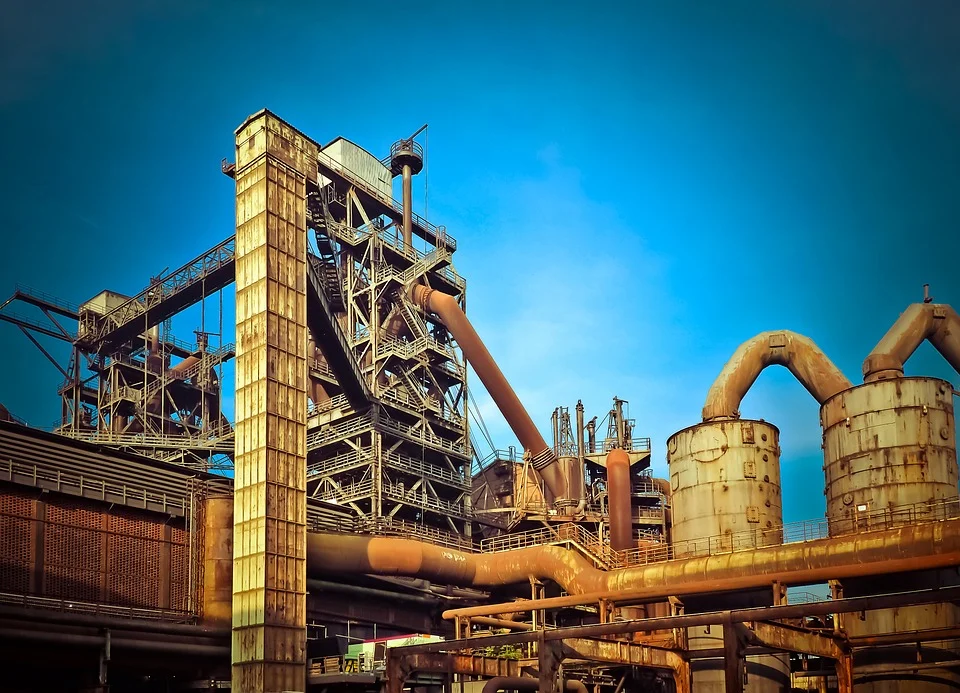
The Journey Of Industrialization has always been a gift to any economy. History shows that an economy that has welcomed industrialisation with open arms has the advantage of growth and development.
It was the period between the 1760s to 1840 that the production methods shifted from handmade techniques to machine-made. Great Britain was the first to industrialise. According to some economists, it was only after industrialisation that a general rise in population happened. With the increase in nations’ income, people’s income rose, and so did their standard of living.
They say Necessity is the mother of inventions. With the worldwide increase in demand for various machine-made goods, creations became necessary. Innovations like, Steam engine by James Watt and the Incandescent lamp by Thomas Alva Edison came up during the first industrialisation period only.
In India, Industrialisation didn’t come this early; it was only after the twentieth century we had a proper mechanism for industries to operate; the Traces of Industrialisation were very blurred before 1947.
Journey Of Industrialization In India

According to Dr R.S kulshrestha, in his book ‘Industrial Economics’, Only a small number of consumer industries were operating in India during the early twentieth century, such as jute, cotton, paper, coal, and some other minerals, tea, etc. For other industrial demands, India was dependent on foreign supplies. The feeling of industrial development in India rose during the first world war.
Industrial Commission was appointed in the year 1916 and gave its report in the year 1918. This commission made many suggestions for developing industries in India, but the then government did not pay any special attention to them. With the end of the war, there was a change in the attitude of the British government. After that, efforts were made to establish the early industrialisation of India.
Due to foreign competition and recession, the condition of the industries started deteriorating, and there was a strong demand for protection from their side. The British government could not avert this demand from India, and eventually, it had to accept the principle of a separate protection policy for India.
In 1921, a Tariff Commission was set up under Sir Abraham Rahimtullah. Based on this commission’s suggestions, the British government adopted the differential protection policy to help Indian industries.
The British government made some announcements in the direction of determining the industrial policy of India and assured that all efforts would be made for industrial development in India after the war.
A Planning and Reconstruction Department was also established in the year 1944, and it took care of the development of post-war India. Announced industrial policy for which special place was given to full use of natural resources of India, increase in the nation’s wealth, elimination of chekari and best system for the security of the country, etc.
In 1946, under the chairmanship of K. C . Niyogi, an advisory planning board was also established. This board, among other things, suggested that for the balanced industrial development of India, a Planning Commission should be established permanently, which should handle only the work of economic planning.
Based on this suggestion, the Planning Commission was established in independent India in March 1950, under whose protection and supervision Twelve Give year plans were constituted until 2014 when NITI Ayog replaced the planning commission.
First Industrial Policy Of India
India gained independence from the British in 1947; for India to stabilise and grow, the government of India was sure that no single ideology would be sufficient. It was the time of the cold war between Capitalists economies and socialist economies. India didn’t opt for a single way; she took the mixed path. Thus, in her first industrialisation policy of 1948, India opted for a hybrid model, where both private and public will work hand in hand for the nation’s development.
Although this statement is much debated, before 1991, India was highly tilted towards a socialist point of view.
Today also, India is majorly known for its rural population; more than forty-five per cent of India’s population derives its livelihood from rural economies. During 1948, the percentage was nearly seventy per cent. Thus to develop the nation, it was important for the rural economy to expand, and therefore the first industrial phase of 1948 concentrated mainly on Small and cottage industries.
Industries then were divided into four areas: industries with exclusive central government control and ownership. The second included the industries reserved for state government, the third included industries which seem potentially to be acquired in future under governments’ control, and the fourth included industries which were open to private players.
Industrial Policy And Resolutions Between 1948-1991

As time passed, various changes were made to the industrial policy of India; some important ones are mentioned here. So the significant change which took place in India’s industrial policy was in the year 1956. With Industrial Policy Resolution (IPR). According to it, Industries were now to be categorised into three major sectors. Namely, schedules A, B and C. Schedule A consisted of 17 industries exclusively owned and controlled by the government. Schedule B consisted of sectors which were both private and public owned. Schedule C consisted of only private industries.
Another major addition to Industrial policy was in 1977, also known as the decentralisation policy. It is known for its harsh restrictions on multinational companies.
In 1980, another industrialisation policy statement came; this promoted Liberalisation in a very selective manner. MRTP act and FERA act were introduced on the basis of this policy.
New Industrial Policy 1991
Also known as the LPG policy and Industrial policy of 1991. Where LPG stands for Liberalisation, Privatisation and Globalisation, respectively, this changed the face of India’s economy, and it was like a god’s hand to help severe instability in the Indian economy. The main traits of this policy were, delicensing, de reservation, disinvestment of the public sector, liberalisation, and amendment to the old MRTP act.
With liberalisation, competition among domestic industries rose, Foreign capital started coming to India, and foreign trade was encouraged.
Through privatisation, disinvestment of various public sector industries was done, which took away government ownership and control, and showed a way towards effective private management.
With globalisation, Various foreign and private investments came into India, and the country’s position on the world’s stage rose to another level.
Conclusion- Journey Of Industrialization
After knowing the journey of industrialisation and policies for it, We surely can agree on one point. For the development and growth of any economy, Timely changes should be made in the nation’s industrial policy. It’s been more than thirty years since this 1991 policy, and now India needs a new Policy. The government is working on it; with the new policy, a new dimension will be opened for business and industries in India.

 Add to favorites
Add to favorites







